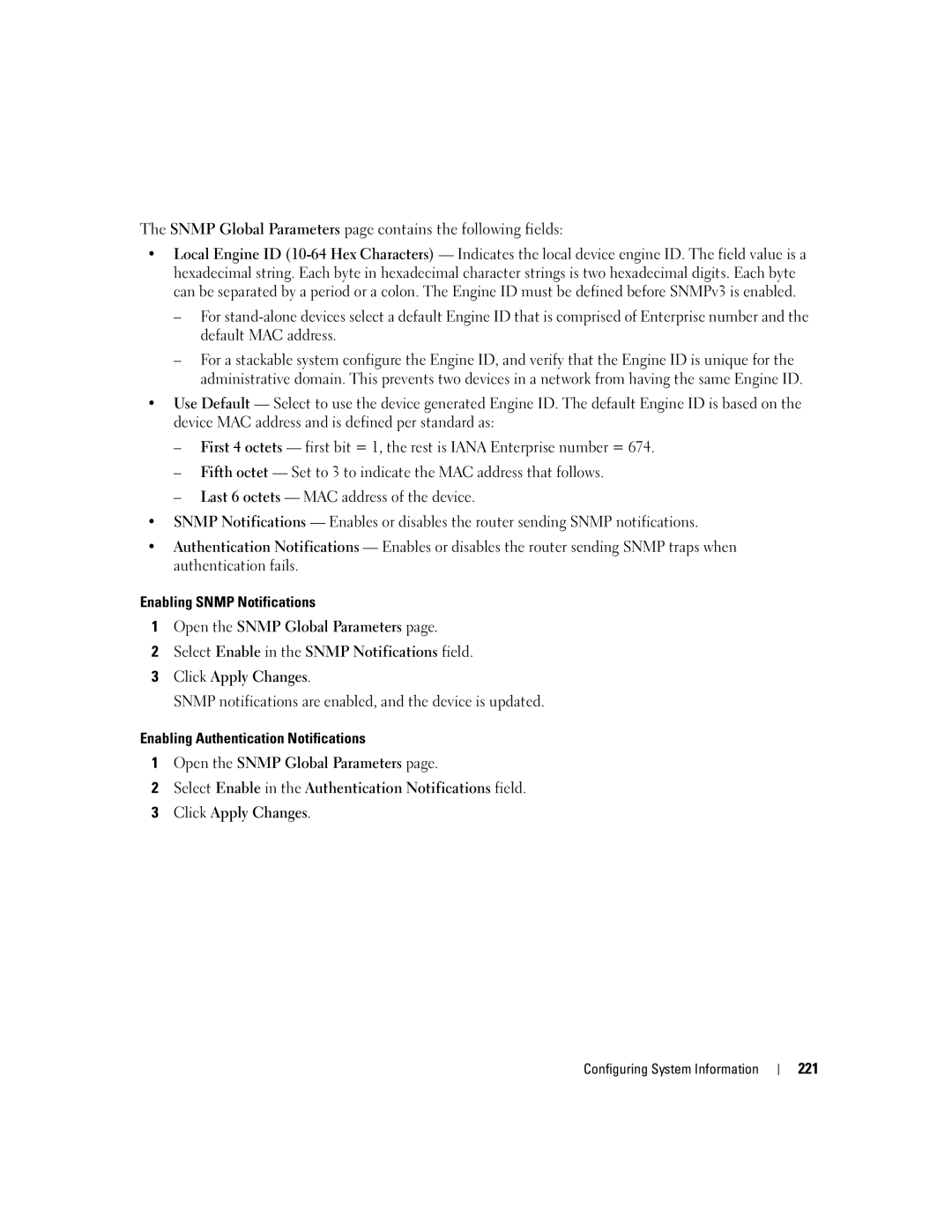The SNMP Global Parameters page contains the following fields:
•Local Engine ID
–For
–For a stackable system configure the Engine ID, and verify that the Engine ID is unique for the administrative domain. This prevents two devices in a network from having the same Engine ID.
•Use Default — Select to use the device generated Engine ID. The default Engine ID is based on the device MAC address and is defined per standard as:
–First 4 octets — first bit = 1, the rest is IANA Enterprise number = 674.
–Fifth octet — Set to 3 to indicate the MAC address that follows.
–Last 6 octets — MAC address of the device.
•SNMP Notifications — Enables or disables the router sending SNMP notifications.
•Authentication Notifications — Enables or disables the router sending SNMP traps when authentication fails.
Enabling SNMP Notifications
1Open the SNMP Global Parameters page.
2Select Enable in the SNMP Notifications field.
3Click Apply Changes.
SNMP notifications are enabled, and the device is updated.
Enabling Authentication Notifications
1Open the SNMP Global Parameters page.
2Select Enable in the Authentication Notifications field.
3Click Apply Changes.
